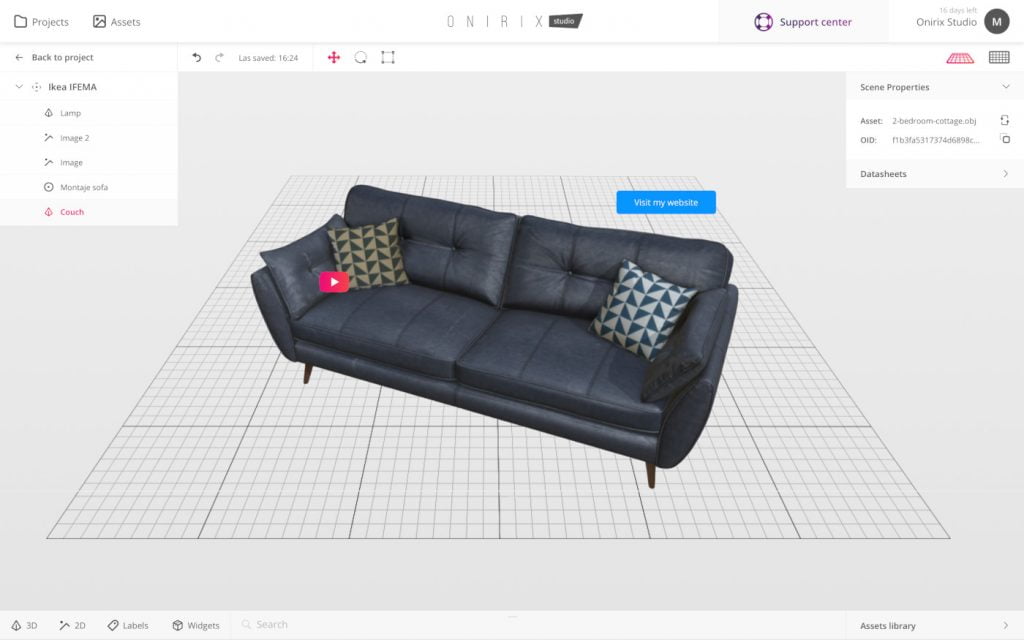AR for Marketing and Advertising
The use of Augmented Reality (AR) in marketing and advertising is fairly new, but already we can see its great potential to change the way we advertise and most of all change the way the customer experiences it.
People like to feel they are part of something, immerse in experiences firsthand and interact with the world around them. With AR you can offer them just that, engaging with your brand and your product in a way they have never done before. They say seeing is believing but imagine what you can achieve by making the customer part of the experience.
Fields of application for AR in Marketing
Marketing is a wide area, so we have highlighted a few different areas and how AR can be used here.
AR for Online Shops
With AR you have a powerful tool to bring your online shop to life and make it more tangible for the customer. You can give your potential customers the opportunity to try on products from the comfort of their own home before buying them, like clothes, makeup or jewelry, which at the same time will reduce the chances of products being returned. But also, for big items that you can’t just buy and easily send back if you don´t like them, AR is a good way to go. Being able to see, for example, a car or yacht at a real-life scale without actually having to go to a shop is a big advantage when it comes to convincing buyers from a distance that your product is worth it.


AR for Social Media
Social media is all about sharing experiences with others. AR can help you to make the experiences interactive and thus bringing the engagement of people to a different level. This is something that has already been proven due to Snapchat’s implementation of AR, which has also resulted in more applications following their example. The important advantage that Onirix offers companies is the use of a more sophisticated AR without having to write any code whatsoever. With our platform, you can go directly from creating your own scenes to publishing them on your social media.
AR for Youtube
Although YouTube is also considered to be social media, you still cannot fully experience AR through this medium. They are, however, testing it in Alpha version with a Beauty Try-On campaign, where users will be able to try on makeup while they are watching tutorials. But till the moment arrives that you can use AR in YouTube firsthand, you can certainly make your videos more interesting by including the possibilities of AR and how the AR experiences would look like.
AR for Print media
When you think of AR, print media is probably not one of the first things that come to mind. But think of the opportunities that AR could offer the print media by bridging a gap between the printed word and the digital world, thus ensuring a better future for the print media as well. They can complement each other perfectly, the charm of printed material brought to life by means of AR. The possibilities are endless, just imagine a movie poster with a QR code that by scanning it will let you interact with movie characters or what to think of redecorating your house by scanning a catalog with your smartphone to see how that new sofa would look in your living room before even buying it. Some products or services are hard to explain with words, AR can help you transform your message into a visual image to give it more strength and power of conviction.
AR for Packaging
First impressions are not always what they seem, and now with AR, you can make sure of that by adding an extra element to your packaging. This way the customers are not limited to the information they can see on the packaging itself. With a QR code, they will be able to access all the extra interactive information you want and at the same time give them a whole new perspective of your products. It is a unique way for customers to interact with a product and this way, build stronger loyalty to a brand.
AR for Events
Augmented Reality could have a great impact on the events industry for different reasons. Of course, the most obvious one is adding an extra element to the experience of the visitors by giving them, for example, an area map that hast been AR-enhanced. This way they would not only find their way around more easily, but it would also be more interactive and entertaining for them. Another reason for impact would be the costs a company would be able to save in logistics, from transportation to setup. After all, by using AR in a trade show they could afford to rely less on physical objects and more on virtual ones.


